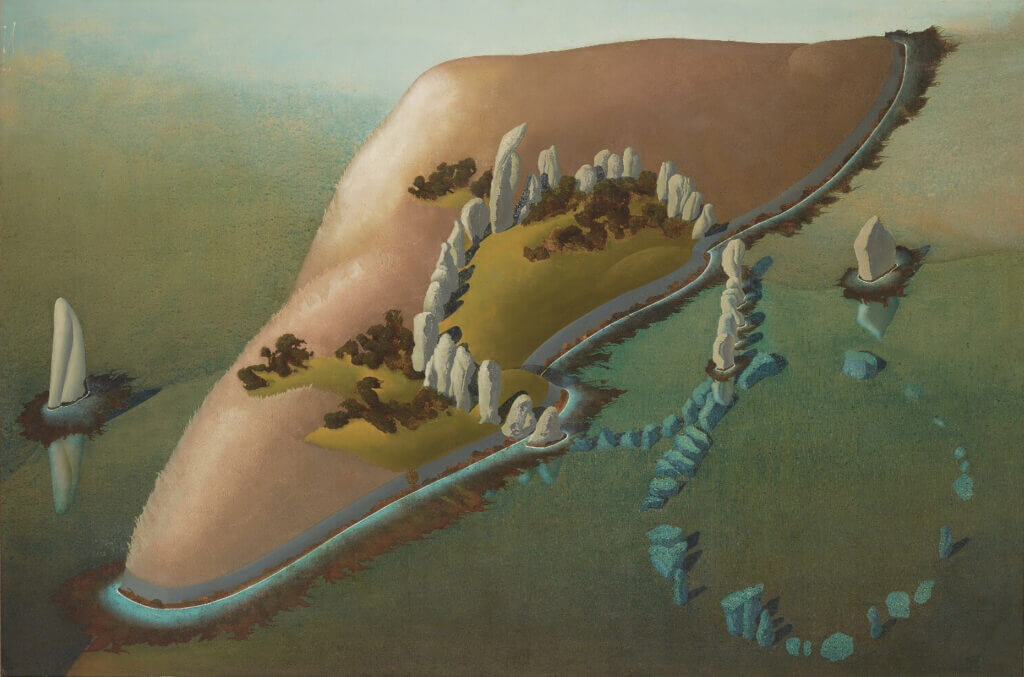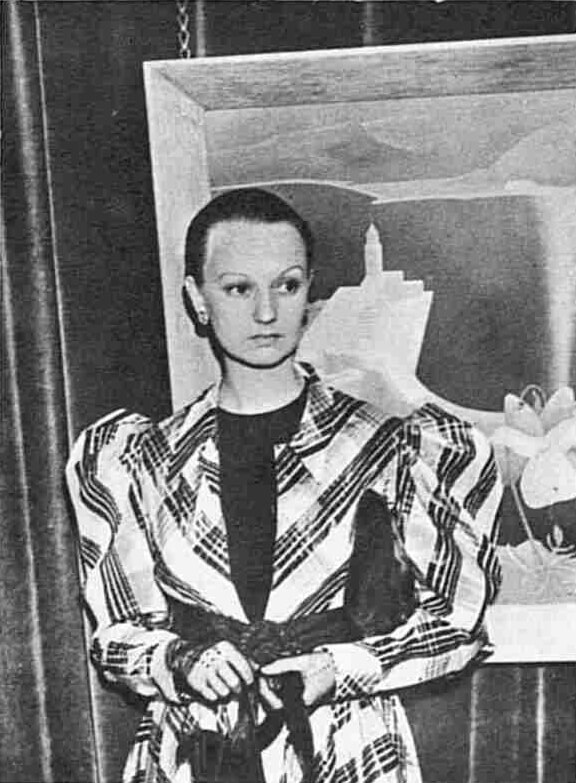Your currently viewing RAW Modern | Switch to RAW Contemporary
La Cathédrale Engloutie, 1950
La Cathédrale Engloutie (trans: The Sunken Cathedral) is a 1952 aerial view of partially submerged stone monuments situated on the tiny island of Er Lannic off the south coast of Brittany. Initially the monuments would have been both on land, but with time and rising sea levels one of the monuments has been partially submerged, only visible at low tide. While today the monuments are semicircular, Colquhoun renders them in an idealized and pristine form as a cosmic lemniscate or infinity symbol, that which floats above the Magician in tarot decks but here flanked by two single megaliths emerging from the water. The title of the painting refers to the 1910 piano composition of the same name by Claude Debussy, who apparently shared Colquhoun’s animist sensibilities. Debussy was inspired by the Breton legend of the sunken city of Ys, where only the cathedral would still occasionally emerge on clear nights, filled with otherworldly music, only to recess back into the deep. This painting serves partially as a commentary on Colquhoun’s imaginings of ancient spiritual technologies where the true cathedral was forged from the living stones.
La Cathédrale Engloutie reflects a number of key themes in Colquhoun’s work: her interest in islands, stone monuments and the convergence points of land and water which Colquhoun held to be exceptionally powerful. Colquhoun painted other somewhat fanciful aerial views of antiquities, Landscape with Antiquities (Lamorna) 1950 and Rocky Island (1969). Each of these paintings is arranged like a mythic ordinance survey map, reflecting deeper relationships with a fictional and idealized landscape of sacred sites. Colquhoun was also compelled by the mystery of sites which are submerged and reemerge with tidal flows, a sacred rhythm of concealing and revealing, suggesting the Surrealist convulsive landscape and the breaking through of the subconscious mind to the conscious. Her Linked Islands I and II from 1947 also explore this theme through the story of the Old Man of Gugh standing stone and Santa Warna’s Well in the Isles of Scilly, two antiquities that Colquhoun visualizes as lovers, perpetually separated and reunited by the motion of the tides. In La Cathédrale Engloutie the submerged nature of the stone cathedral is not to be mourned as a lost temple. Instead, Colquhoun recasts it as a mystery that speaks to elemental balance, a revelation of the convulsive landscape, the play of the seen and unseen, and an eternal meditation of time and tide.

